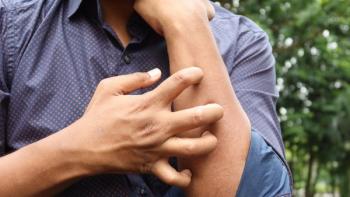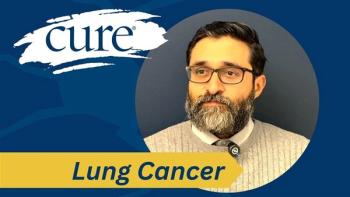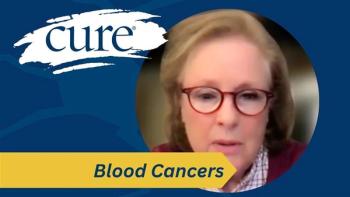
Expert Discusses Living With Chemotherapy-Induced Peripheral Neuropathy
Chemotherapy-induced peripheral neuropathy affects many patients with cancer, so CURE spoke with an expert about coping strategies for those who have developed this condition.
Many patients who receive chemotherapy to treat their cancer develop chemotherapy-induced peripheral neuropathy (CIPN), a condition that often presents itself as numbness, tingling or loss of feelings in the hands and feet.
What is chemotherapy-induced peripheral neuropathy, and about what percentage of patients are affected by it?
CIPN can affect a patient’s daily activities long after treatment ends, but there are a number of resources — such as seeing a physical or occupational therapist — that can help manage the condition. CURE spoke to Mackenzi Pergolotti, Ph.D., OTR/L, assistant professor in the Department of Occupational Therapy at Colorado State University. Pergolotti, who focuses much of her research on cancer rehabilitation, answered some of the questions that CURE readers had to ask.Chemotherapy-induced peripheral neuropathy, or CIPN for short, can affect up to 90 percent of survivors who receive neuro-toxic chemotherapy (e.g., cisplatin, carboplatin, oxaliplatin, paclitaxel, docetaxel, vincristine, vinblastine among others). Peripheral neuropathy is a set of different symptoms that occur when the nerves farthest from the brain and spinal cord, such as the nerves in hands and feet, are damaged.
Most often, CIPN occurs in both hands or both feet and moves up the limbs. In cancer survivors who receive neuro-toxic chemotherapies, and nerve damage occurs, symptoms can include:
- pain
- numbness and tingling
- loss of feeling in hands and feet
- hot or cold sensitivities
- trouble swallowing
- constipation
- muscle weakness
- increasing risk of falling due to impairments in balance
Once developed, is the condition permanent?
Survivors who have CIPN may notice difficulty buttoning shirts, zipping up pants, picking up drinks and opening jars, or in some cases, debilitating pain.It depends. Some survivors are able to recover from CIPN, but for others, the damage can be permanent. It can depend on age and other conditions survivors may have, like diabetes, or how often and how long the chemotherapy was given.
Are there any other conditions related to neuropathy that may emerge later on down the road?
Is there anything that can be done during treatment to prevent CIPN, or make it less severe?
What kind of resources or services are out there for people affected by CIPN?
If CIPN remains an issue, related conditions could be balance issues, trouble breathing, constipation, difficulty urinating, and even a decrease in blood pressure. However, once the toxic chemotherapy is stopped, the body may heal and prevent serious or long-term issues.The research on this is ongoing. It appears that CIPN can be attenuated by a change in treatment plan, such as change in chemotherapy schedule, or trying a different chemotherapy all together. There are other drugs and even supplements that are now being tested, but much more research is needed.If survivors have difficulties with symptoms from CIPN that are not allowing them to participate in life the way they would want to, they are encouraged to ask their primary care providers for referrals to occupational and/or physical therapists. These rehabilitation professionals have experience working with clients with peripheral neuropathy, either because of CIPN or with another source, e.g., diabetes.
What advice would you give to someone with CIPN?
Occupational therapists are trained in problem-solving. Their job is to help individuals with challenges engage in life, either through rehabilitating or through teaching them how to adapt how they conduct daily activities, such as getting dressed, managing fatigue and minimizing fall risk factors. Physical therapists work directly on balance issues, and strengthening weakened muscles to enhance stability and endurance.Don’t wait, or “tough it out.” Tell your doctor or nurse what you are experiencing. There is no reason to struggle alone. Go to rehabilitation and get back to life!





